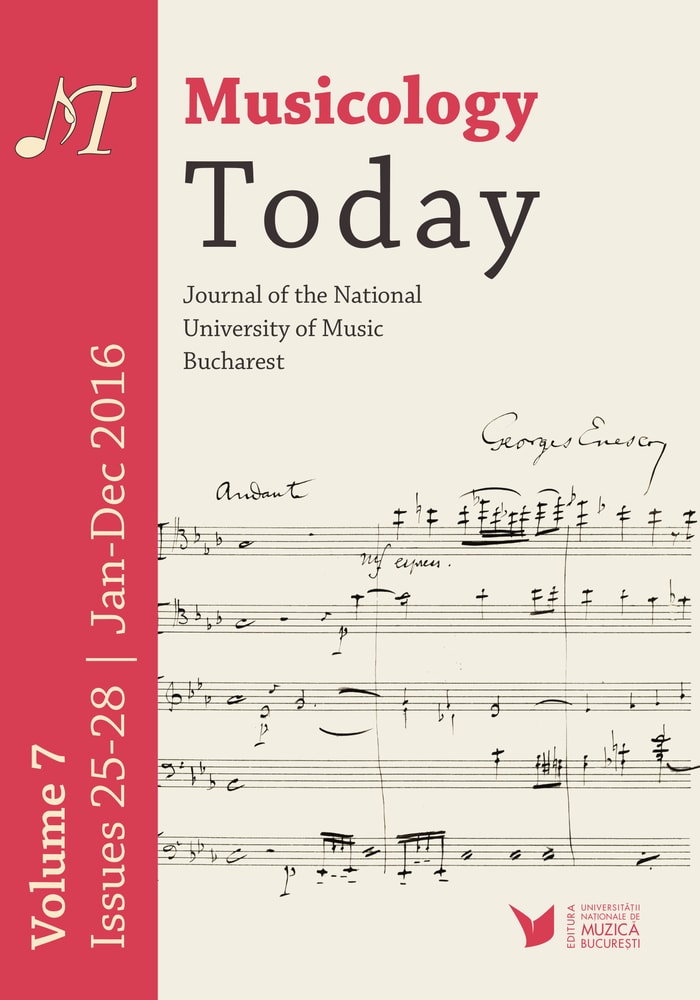Aspects of Heterophonic Syntax in the Works of Ștefan Niculescu: Case Study: Hétérophonies pour Montreux
Aspects of Heterophonic Syntax in the Works of Ștefan Niculescu: Case Study: Hétérophonies pour Montreux
Author(s): Olguța LupuContributor(s): Dragoş Manea (Translator)
Subject(s): Music
Published by: Editura Universității Naționale de Muzică din București
Keywords: Pierre Boulez; coincidentia oppositorum; form of synchrony;
Summary/Abstract: For Ștefan Niculescu, heterophony became – in a large part of his work – not merely a preferred form of organization, but an architectonic principle which proved capable of generating ample musical forms (as polyphony generated the fugue and homophony the sonata, heterophony too generates the form of the “synchrony”), by converting the phenomenon of vibration within sound (the node/anti-node alternating pattern) into the macro-temporal breath of an entire composition. Starting from Niculescu’s own musicological writings – whose clarity and substance have rendered them seminal – the present study highlights not just the quantitative dimension (the multitude of compositions that integrate heterophony or are in fact based on it), but also the qualitative one, insisting on the philosophical scope and semantic dimension that Niculescu places upon heterophony, which represents for him not merely a means of organizing sound, but the kineto-musical illustration of the relationship between Creator and Created, Single and Multiple – a relationship whose terms are not yet equivalent. For Niculescu introduces here a teleological understanding of the world, where pendulum swings between the states of uni- and multivocality are ordered axiologically, the final purpose of the composer’s endeavor being to achieve a state of attunement, reached (most often) through convergence in unison. The author has chosen as a case study the only one of Niculescu’s compositions whose title explicitly employs the term heterophony.
Journal: Musicology Today: Journal of the National University of Music Bucharest
- Issue Year: 7/2016
- Issue No: 26
- Page Range: 117-138
- Page Count: 23
- Language: English

